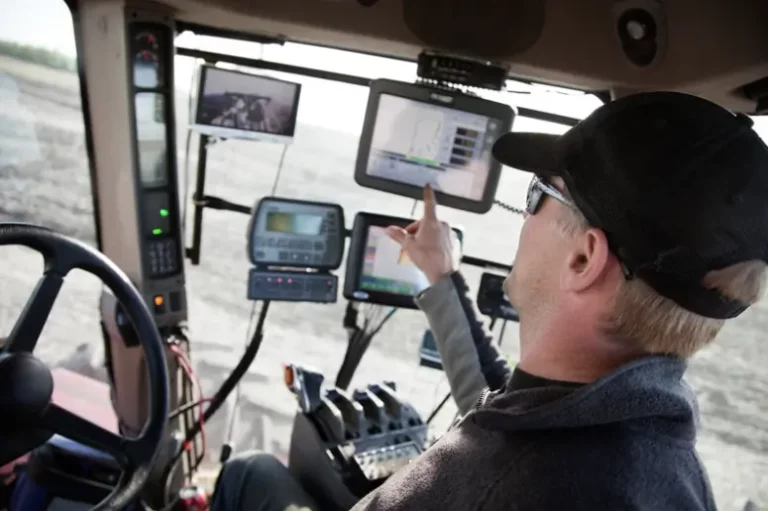Foreword: The Agritech Evolution Through AI
In the agricultural sector, a renaissance is underway, driven by Artificial Intelligence (AI). This transformative wave is not just about adopting new technologies; it’s about fundamentally rethinking farm management to make it more efficient, sustainable, and productive. This extensive narrative explores the intricate journey of integrating AI into agricultural practices, showcasing how solutions like PeakMet can catalyze this transition, offering a blueprint for farmers and agribusinesses ready to embrace this new era.
AI’s Infusion in Agriculture: A Thematic Exploration
The integration of AI in agriculture, often termed as ‘Agritech’, promises to revolutionize traditional farming methods. This integration targets critical areas such as crop health monitoring, yield prediction, resource management, and market analysis, setting the stage for a more data-driven, precise, and sustainable agricultural practice.
- Precision Farming: AI enables farmers to apply the exact amount of water, fertilizers, and pesticides needed, reducing waste and environmental impact.
- Yield Prediction and Crop Health Monitoring: Advanced AI algorithms analyze data from drones, satellites, and sensors to predict crop yields and detect plant diseases early.
- Automated Machinery: Self-driving tractors and harvesters, guided by AI, optimize field operations, saving time and reducing labor costs.
- Supply Chain and Market Analysis: AI tools help in forecasting market demands and managing the supply chain more effectively, ensuring that agricultural products are sold at the right time and price.
- Precision Farming: AI enables farmers to apply the exact amount of water, fertilizers, and pesticides needed, reducing waste and environmental impact.
- Yield Prediction and Crop Health Monitoring: Advanced AI algorithms analyze data from drones, satellites, and sensors to predict crop yields and detect plant diseases early.
- Automated Machinery: Self-driving tractors and harvesters, guided by AI, optimize field operations, saving time and reducing labor costs.
- Supply Chain and Market Analysis: AI tools help in forecasting market demands and managing the supply chain more effectively, ensuring that agricultural products are sold at the right time and price.

Comprehensive Steps for AI Integration in Farm Management
- Visionary Planning and Objective Setting:
- Initiate by defining clear, achievable objectives for AI integration within the farm’s ecosystem, aligning with overarching business goals.
- Conduct a situational analysis to understand existing farm operations and identify potential areas for AI-driven improvement.
- Technology and Solution Selection:
- Investigate and select appropriate AI technologies that align with specific agricultural needs, considering factors like crop type, farm size, and climate conditions.
- PeakMet can be instrumental here, offering AI solutions tailored to the unique dynamics of agricultural operations.
- Data Strategy and Infrastructure Development:
- Develop a robust data collection strategy, utilizing drones, IoT devices, and sensors to gather comprehensive agricultural data.
- Establish a data management infrastructure that supports the seamless integration and analysis of collected data through AI systems.
- AI System Implementation and Field Integration:
- Deploy chosen AI solutions in a phased manner, starting with areas that promise quick wins or significant impacts, such as crop health monitoring or automated irrigation systems.
- Ensure that AI systems are fully integrated with existing farm management software, creating a unified operational platform.
- Training, Adaptation, and Empowerment:
- Provide extensive training for farm staff and management on utilizing AI tools and interpreting the data insights generated.
- Foster an adaptive culture that embraces technological advancements and leverages AI for daily farm decision-making processes.
- Performance Monitoring and Evolutionary Growth:
- Implement continuous monitoring mechanisms to assess the performance of AI integrations against predefined agricultural productivity and sustainability metrics.
- Adapt and evolve AI strategies in response to performance data, technological advancements, and changing agricultural dynamics.
Best Practices for Maximizing AI’s Impact in Agriculture
- Embrace Comprehensive Data Analysis: Leverage AI not just for operational efficiencies but for gaining strategic insights into crop selection, market positioning, and resource allocation.
- Prioritize Sustainable Practices: Utilize AI to enhance the sustainability of farming operations, focusing on conservation of water, soil health improvement, and reduction of chemical usage.
- Engage in Collaborative Ecosystems: Participate in agricultural AI networks and partnerships to stay abreast of emerging technologies and share knowledge and best practices.
- Innovate Continuously: Keep exploring new ways to integrate AI in farming, from advanced genomics in crop breeding to blockchain in supply chain management.
Epilogue: Cultivating the Future of Agriculture with AI
The integration of AI in agriculture is more than a trend; it’s the future of farming, promising a horizon where efficiency, sustainability, and productivity coalesce. With strategic planning, tailored solutions like those from PeakMet, and a commitment to innovation, the agricultural sector can anticipate not only enhanced operational efficiencies but also a significant contribution to the global food system’s resilience and sustainability.



